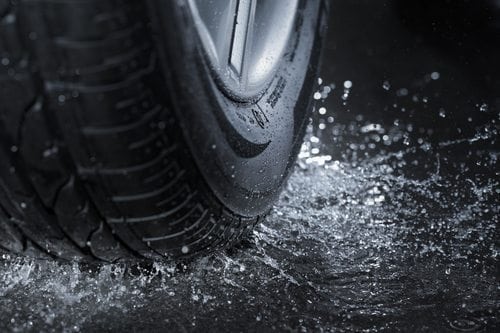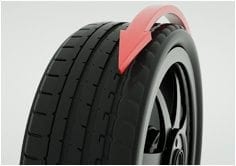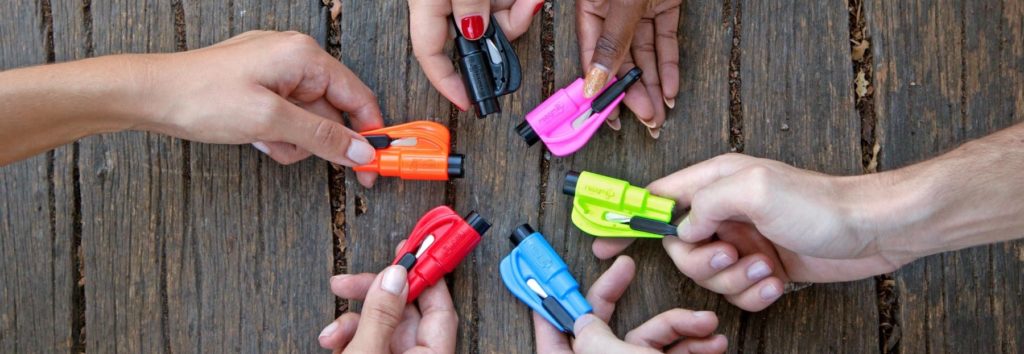Tire Tread Wear
Think of your tires as the foundation of your car. After all, tire tread affect how your car handles, the comfort of your ride and, most importantly, your safe driving experience. Proper tire maintenance includes keeping your tires inflated to the correct tire pressure, maintaining an adequate tire tread, checking the air-level balance, and keeping the wheels in alignment.
Plus, the amount of wear on your tires can tell you a lot about the problems your tires — or, more specifically, your vehicle — are facing. With that in mind, make it a point to check your tires regularly for wear in order to prevent long-term problems. Additionally, be sure to consult a professional about what is a safe amount of wear and then replace your tires as needed. If you do need new tires, search on reputable websites like Tire Buyer to determine the best type of tire for your vehicle.
Below are seven types of tire wear and how you should respond when these situations pop up.
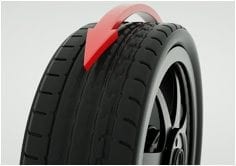 1. Center Wear
1. Center Wear
If one or more of your tires are worn down the center — but not on the sides — the culprit is most likely an overinflated tire. Tires bulge from overinflation — and continuing to drive it on the road — hits the middle of the tires. To avoid center wear in the future, keep your tires inflated to the pressure listed in your owner’s manual.
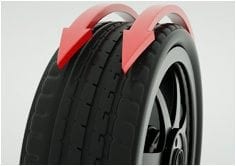 2. Side Wear
2. Side Wear
If you have consistently under-inflated tires, you’ll often find that your tread is worn on the sides, but not down the middle. However, if you are vigilant about checking your tire pressure, yet still have side wear, this may be an indication of a bent or worn steering arm or a car out of alignment.
 3. Cupping Wear
3. Cupping Wear
Cupping looks like scoops worn in your tread and is caused by a repeated up-and-down motion. Generally, you can see or feel the tire bounce as you drive with this type of wear, which is why you’ll often see cupping on trailer tires. Cupping on cars is caused by a worn shock absorber or a bad suspension system.
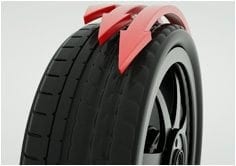 4. Feathering
4. Feathering
Feathering is harder to catch with a visual inspection, but easy to feel when you run your hand along the tread of your tire. You can feel an individual tread worn on one side and sharp on the other. Feathering is generally caused by either excess toe-in or toe-out, which can be adjusted with a proper wheel alignment. However, feathering might also be a symptom of aggressive driving; specifically, taking corners at high speeds.
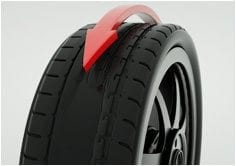 5. Flat Spot Wear
5. Flat Spot Wear
Flat spot wear is often caused by aggressive or emergency braking, although it may also be an indication of a larger brake issue. If you spot this type of wear — and don’t remember making any sudden or hard stops — have your brake system checked for a foundation issue.
6. One Side Wear
Another indictor of a misaligned vehicle is when either the outer or inner part of the tire wears faster than the rest of the tire. A new alignment will generally solve the problem. But, if it doesn’t, make sure to have the springs and ball joints checked out.
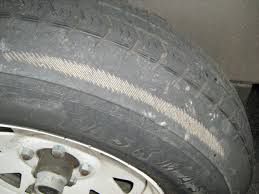
7. Sidewall Wear
Sidewall wear is usually caused by a driver who parks too close to the curb. Additionally, this type of wear is often seen in urban settings with street parking. And, in excessive cases, sidewall wear can weaken the tire’s core and cause a tire to buckle.
Authored by Social Monsters

